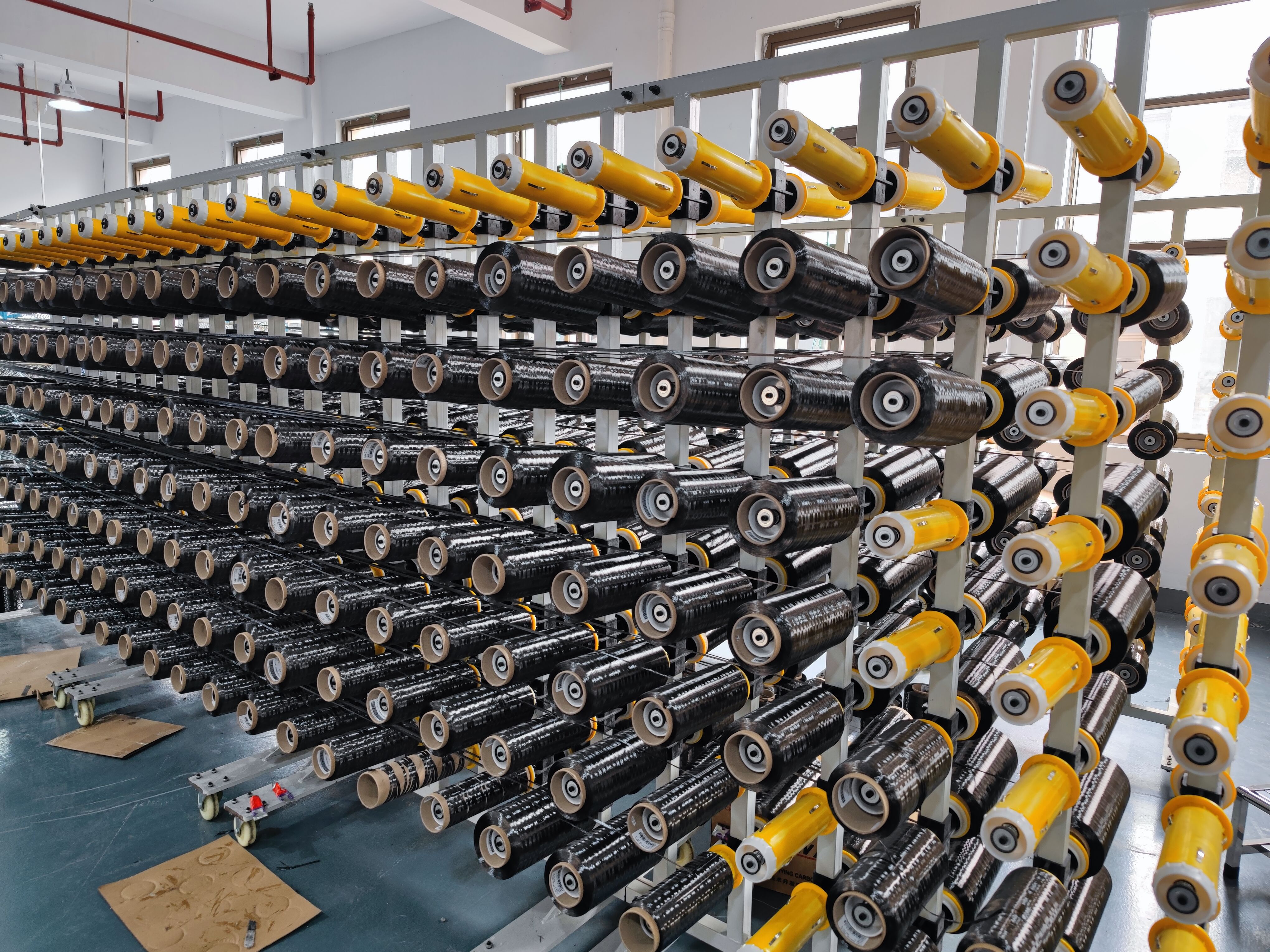Carbon fiber production begins with precursor materials such as polyacrylonitrile (PAN) or rayon. These precursors undergo complex chemical treatment, heating, stretching, and ultimately carbonization to transform into ultra-strong micro-fibers known as "filaments." For practical applications, thousands of filaments are bundled together into "tows." The tow specification (e.g., 1K, 3K, 6K, 12K) is determined by the number of filaments it contains.
Understanding the "K" Designation:
"K" stands for "kilo" (thousand).
1K tow: Contains ~1,000 carbon filaments.
3K tow: Contains ~3,000 carbon filaments.
6K tow: Contains ~6,000 carbon filaments.
12K tow: Contains ~12,000 carbon filaments.
Simply put: Lower K-values indicate finer, lighter, and more flexible tows; higher K-values indicate thicker, stiffer, and heavier tows. The choice of K-value directly impacts the properties and application outcomes of the final carbon fiber fabric.
Core Differences Between Tow Specifications:
Appearance & Texture:
Low-K tows (e.g., 1K, 3K): Produce fabrics (e.g., plain weave, twill) with fine textures, small/dense patterns, and a refined aesthetic. Ideal for high-visibility surfaces.
High-K tows (e.g., 12K): Yield fabrics with bold, pronounced patterns and a rugged visual impact.
*Summary: Choose low-K (1K, 3K) for refined surfaces; high-K (12K) for structural boldness.*
Weight & Thickness:
At identical weave structures, higher K-values result in thicker, heavier fabrics. A 12K tow contains 4x more filaments than a 3K tow, leading to higher fiber content per unit area (greater weight per unit area, gsm). This makes high-K fabrics more efficient for large parts or rapid thickness/strength buildup.
Flexibility & Processability:
Low-K tows (e.g., 3K): Thin and soft fabrics with excellent drapability. Conform flawlessly to complex molds and tight curves without bridging or wrinkling. Ideal for intricate geometries.
High-K tows (e.g., 12K): Stiffer fabrics prone to bridging or wrinkling on sharp contours. Better suited for flat panels or gentle curves.
Strength (Key Clarification):
The strength/modulus of individual filaments is unaffected by K-value; it depends on the fiber grade (e.g., T300, T700, T1000).
Composite strength is governed by: fiber grade, resin properties, ply design, and manufacturing quality.
Indirect K-value impact: Coarser tows (e.g., 12K) may experience minor performance loss due to tighter bending in weaves. However, in practice, design and processing dominate strength outcomes.

Cost:
Higher-K tows typically offer lower cost per unit weight. Bundling more filaments (e.g., 12K vs. 4x3K) improves production efficiency.
Resin Wettability (Critical Process Factor):
Low-K tows (e.g., 3K): Greater surface area and shorter resin flow paths enable thorough impregnation, minimizing voids/dry spots for higher-quality composites.
High-K tows (e.g., 12K): Resin penetration into the core is challenging. Poor processing can cause dry centers, creating weak points. Advanced techniques (e.g., RTM, vacuum infusion) are often essential.
Dr. Reinforcement Offers Comprehensive Specifications
At Dr. Reinforcement, we provide a full range of high-quality carbon fiber tows from 3K to 24K, meeting diverse design and application needs. Whether you prioritize surface finish, efficient layup, or cost targets, we have the right specification. Contact us anytime for expert guidance and technical support.
Email:[email protected]
Whatsapp:86 19121157199
 Hot News
Hot News